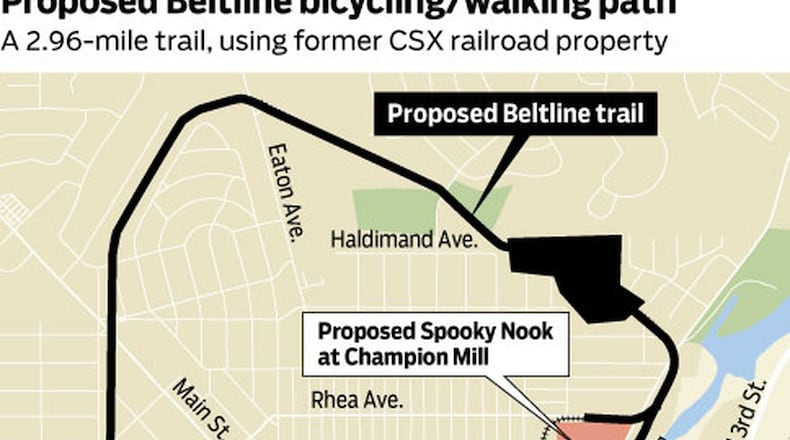“From the city’s perspective, it’s very significant because we really don’t have a dedicated source of revenue for bike trails,” said Rich Engle, Hamilton’s director of engineering. “We are focusing all of our infrastructure funds on intersections and street resurfacing, and those kinds of projects.”
The city had applied for $1.5 million, and $750,000 was included in the proposed capital budget.
Phase I runs from Cleveland to Eaton Avenues and will include a 117-foot-long bridge over Two Mile Creek, said Allen Messer, a city employee who has worked on the project’s design. That Beltline section ends at Eaton Avenue near the Flub’s Dariette ice cream shop.
Phase II will link Phase I with North B Street near the under-construction Spooky Nook Sports Champion Mill indoor sports complex. That comes as good news to many residents, because when consultants recently collected information for an Active Transportation Plan for the city — focusing on walking, biking and public transportation — the Beltline was popular.
A proposed bike trail along North B Street through Spooky Nook and the High-Main Bridge is not part of the Beltline itself but expected to be another aid for walkers and bikers. That part of bikeway, which also will link to the Great Miami River Bikeway via the Black Street Bridge, has not yet been designed. But the city this fall learned it had won funding for that project.
“Certainly it will provide connectivity through our West Side of Hamilton, to the river and to the Spooky Nook sports complex,” Engle said. “Having connectivity to the river and downtown, and we already have connectivity for a bike trail on the east side of the river, so this will complement that on the West Side.”
Engle complimented the city’s engineering staff and also officials with the Ohio Department of Transportation and other state agencies for Hamilton’s success in winning state grants.
“We’ve had good staff in the Engineering Department working diligently on identifying grants and working hard to make sure that our projects meet the qualifications,” he said. “ODOT has been very helpful to us as well, helping us to identify grants. They have given us heads-up that for instance we have bridge-grant applications that have been approved because they told us, ‘Hey, your bridges qualify.’”
“I have to give all my accolades to the staff that helped to identify those opportunities.”
The Beltline follows the path taken by the rail spur once used by Champion for transporting products to and from the paper mill. Although it may be years before the beltline reaches Main Street at its southwestern-most point, the city and ODOT made arrangements for improvements to be made that will be necessary when the Beltline is built at the under-construction intersection of Main Street/Cereal Avenue/Haldimand Avenue/Western Avenue to realign the streets and make it safer and easier to pass through.
About the Author

